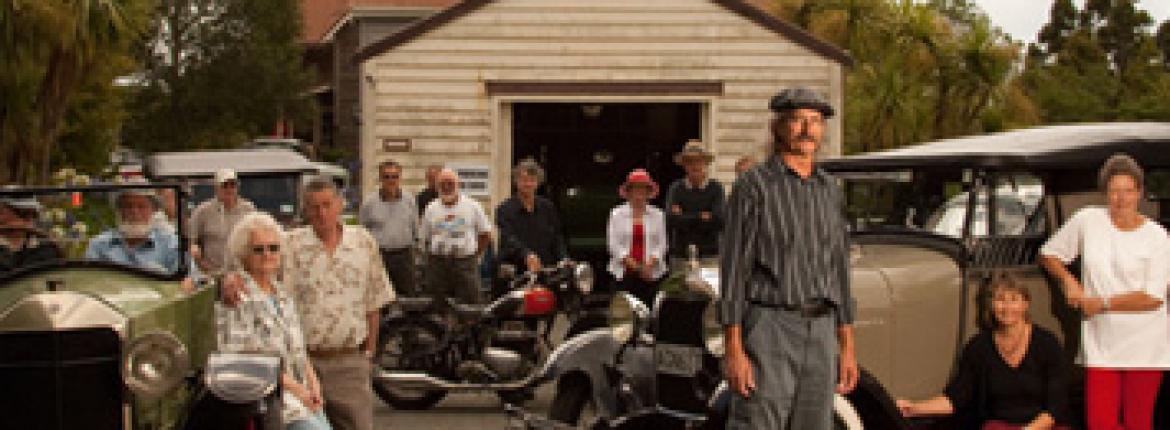They are keen to discuss the intricacies of the ex–London taxi cab – or ‘hiring landaulette’ – and Paul is happy to accommodate them.
It’s an impressive and graceful machine and the restoration job, now close to completion, has clearly been painstaking. The interior is immaculate, the paintwork and brass wear is shiny, the wheels spotless.
Paul describes his serious obsession with this – and other veteran and vintage cars – as “a very nice disease. It’s constructive,” he says. “You end up with something nice… with these beautiful toys.”
Another of his ‘beautiful toys’ is a dark blue 1931 Bugatti, a bullet-shaped one-seat racer that looks as if it would go like the clappers.
“I’ve told my son that it goes in the grave with me.”
Other club members nod understandingly. Apart from the issue of wanting to preserve these vehicles for future generations, they would probably all choose to be buried with their meticulously-groomed, highly shined, much-loved vehicles.
These members have much in common. The obvious one is that they all own pre-1980s vehicles – cars, motorbikes or commercial vehicles. (Anything aged over 30 years is eligible for Vintage Car Club membership). They also share a joy of driving and socialising with like-minded enthusiasts. Warkworth and Wellsford Vintage Car Club President Leon Salt – who, with his wife Brendda owns a 1928 Ford Model A – organises two annual rallies for all the members and a third for veteran vehicles (which describes vehicles made before 1918).
Rallies are a big attraction of such a club. Says Maureen Belch, who with husband Tom owns a darling 1958 Wollesley 1500 in mint condition: “Rallies take us on roads we wouldn’t otherwise go on. On runs, there’s a tail-end-Charlie who makes sure everyone gets home safely – so you can’t get into too much trouble.”
It suits these older cars to be off the beaten track, too.
“Older cars were built for rough roads,” says Grahame Power, owner of several old beauties, including a green convertible 1918 Scripps Booth that he and his wife Anne have had for 25 years. “You drive slowly, so dust isn’t a menace – it’s more like riding a horse in that respect.
“On a rally, you’re driving through countryside all day and you get to the end of the day and pat your car’s bonnet and say ‘well done’. It’s the journey, not the destination for these old motors.”
Another advantage of club membership is help with the ‘work in progress’ that owning a vintage car entails. Some people are happy to pull motors apart, others are not. In this community, there is always someone willing to lend a hand.
James Welch confirms this. “We help each other with information and supply parts – all that.”
His cream 1952 Riley is rigged for camping holidays, with boxes and tubes and deck chairs strapped to the car’s extremities. It goes everywhere, he says – mostly on back country roads to remote spots. “They’re built solid,” he says of Rileys, looking into the distance as he recalls his first interaction with a Riley, in 1955.
He has two now. This car is his everyday car – he doesn’t mind too much if it gets dinged, he is not precious about it. The other one is something else. It is fully restored, lives under cover and has only been rained on three times in 40 years.
Other club members nod understandingly.
Reported by Kathryn Webster for our AA Directions Spring 2024 issue




